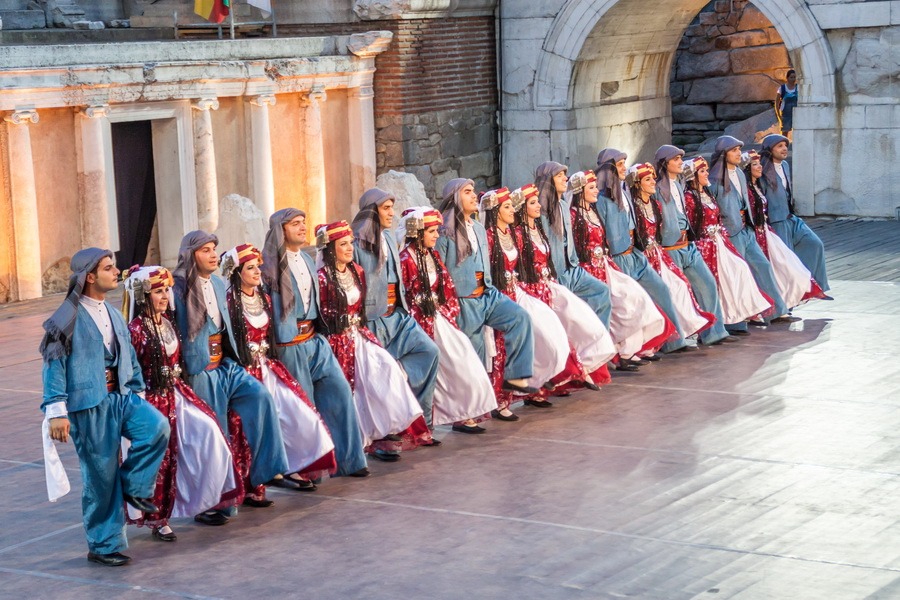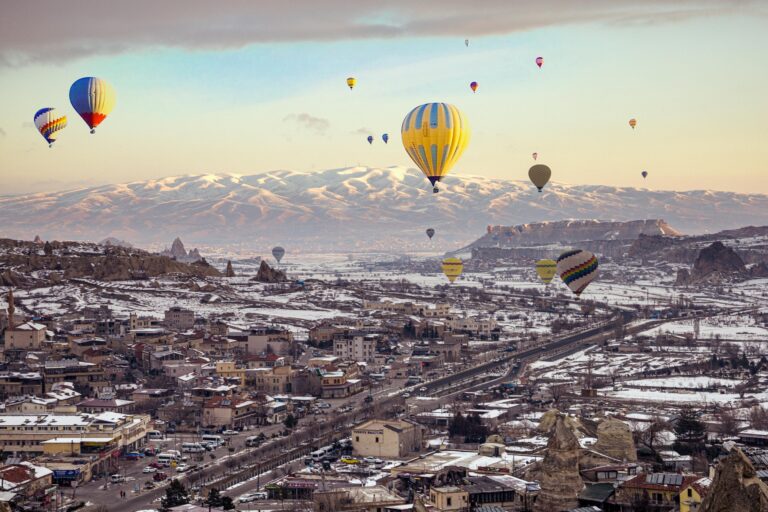Culture of Turkey
Turkey, often known as Türkiye, is a vast nation with a wide range of interests. Its position at the meeting point of Europe and Asia, as well as Ottoman history and its inhabitants from the Seljuk era to the Republic of Turkey’s founding on October 29, 1923, and its first president, Ataturk, have all had an impact. The robust Turkish economy has also contributed to the success of Turkish culture, allowing for its dissemination and promotion across the globe.
Turks take great pride in their nation. The Turkish flag is frequently seen dangling from homes, businesses, and other structures. Since he was able to modernize their nation and bring it into line with European standards, many Turks link their national identity with the “father of the Turks,” Ataturk.
Dance, music, cinema, architecture, religion, and literature are the main facets of the culture of 75% of Turkish citizens who live in urban areas, despite the fact that cultural practices differ throughout the nation. This provides an unparalleled cultural foundation for anyone who wants to travel to and comprehend modern-day Turkey.
Aspects of Turkish Culture
Insights into the primary aspects of contemporary Turkish culture are provided below, along with examples of inspiring artistic, musical, theatrical, and other forms of cultural expression.
Music
With influences from both Eastern and Western cultures, Turkish music has become incredibly diverse in recent years. Complex rhythms and improvisation are used in folk music. Traditional instruments that provide soothing and appealing tones include the reed flute Ney and the long-necked lute Saz. Folk musicians Volkan Konak, Fuat Saka, Onur Akin, and Cenk Erdogan are well-known in Turkey.
Many listeners in Turkey are drawn to the increasingly popular saz orchestra, which is backed by traditional instruments and arabesque songs.
Additionally, Tarkan, a well-known pop artist, is a product of the Turkish music business. With his hallmark song “Simarik,” he even charted in the US and was named as one of the greatest pop musicians in European history by Rhapsody.
Movies
A significant aspect of contemporary Turkish culture, which has long flourished as a source of amusement for the populace, is cinema. Turkish television shows, or “dizis,” have become incredibly popular both locally and abroad. A historical drama series with outstanding production and narration that tells the story of Suleiman Magnificent and his time is the most watched Turkish television program in the world.
Turkish films that have received international recognition include Nuri Bilge’s Distant, Serof Goren’s The Road, and Metin Erksan’s Dry Summer. The latest films include Ceyda Torun’s 2016 documentary Kedi, Semih Kaplanoglu’s 2019 drama Commitment, Sevgi Hirschhauser’s 2020 film Toprak, and Ferit Karahan’s 2021 film Brother’s Keeper.
Dances
Turks enjoy dancing, and any visitor will find their traditional dances to be an engaging show. You will love the stunning costumes and choreography, which are always about rhyme and particular form, whether it is Halay, Horon, or Zeybek.
These dances are the legacy of past generations and hold significant historical value, even if each region of Turkey has its own unique style.
Theater
Statistics from 2022 show that there are 2,366 theaters in Turkey. Despite the current political pressure and art control that have characterized the nation, this number is quite amazing.
Performance art, feminist theater, monodrama, storytelling, fresh readings of classical texts, and many more dramatic forms, trends, and emerging dramaturgical and narrative strategies are all part of the Turkish theater’s current terrain.
The major Turkish cities offer enthralling performances for theatergoers. Every evening, a few dozen productions are presented in Istanbul.
Theatrical performances including Karagoz (shadow theater), Meddah (one storyteller), puppet theater, stage magic, and Ortaoyunu are all included in traditional Turkish theater. The latter is a folk play, similar to Karagoz, in which Kavuklu and Pisekar are the two main protagonists. Pisekar has an education and is able to distinguish between right and wrong, but Kavuklu lacks knowledge and is perplexed. The struggle between these two is the central theme of the play.
Turkish Art
Because of Anatolia’s special geographic location, people have been able to produce and develop visual representations like calligraphy, sculpture, and painting for ages. Traditional handicrafts like as ceramics, earthenware, coppersmithing, Cini tiles, weaving, woodworking, kneading, embroidery, and miniature art are also included in the category of Turkish fine art.
In Turkey, craft stores may be found practically anywhere, and visitors can learn traditional handicrafts from the people.
Gizem Saka, Haluk Akakce, Bedri Baykam, Seteny Ozbek, Bahadir Gokay, and Hayal Pozant are a few Turkish artists whose work is worth seeing.
Architecture
Turkish architecture encompasses Byzantine, Ottoman, Seljuk, and modern periods. As a result, the nation has a few architectural tendencies that occasionally run counter to one another. The Turkish architectural scene is somewhat discordant and uncoherent, even to the inexperienced eye. However, this is precisely what draws and captivates a lot of travelers.
One can get a sense of the architectural diversity by visiting places like the Apollon Temple, Sultanahmet Square, Dolmabahce Palace, Beylerbey Palace, Yeni Cami Mosque, Eyup Sultan Mosque, Basilica Cistern, and Hagia Sophia.
Visit the Dutch Embassy in Ankara, which was created by renowned architect Eldem, or the Social Security Complex in Istanbul to see the advantages of Turkey’s modern architectural trend. Another significant figure is Seyfi Arkan, Ataturk’s personal architect who built the Glass Villa of the Cankaya Kosku and the Bauhaus-style Florya Ataturk Marine Mansion.
Turkish Literature
Uygurt Turk poetry, the earliest known work of Turkish literature, dates around 600 AD and was found in classical Chinese archives. The earliest poetry was always oral; these were shamanic and animistic lyrics from Turkic culture, which were frequently repeated before and after hunting in religious ceremonies. This is Turkish literature’s ancient era.
In Turkish culture, Ottoman literature is regarded as the Golden Age. Poetry in particular and prose in general were immensely popular at this time. The Persian literary tradition known as gazel and another Persian-derived Arabic literary tradition called kaside were both incorporated into the Turkish written language. Divan Literature was the written form of Ottoman Turkish that resulted from these influences. Yunus Emre’s The Treatise of Counsel and Asik Pasa’s The Book of the Stranger, both from the 13th and 14th centuries, are excellent examples of the divan literary tradition. Travel stories, history, and customs are typically described in a lot of prose writing.Evliya Celebi wrote the well-known book, the Book of Travels. Along with Western influence, radical literary ideas emerged as a result of governmental reforms during the Ottoman Empire’s decline at the start of the 19th century. Turkish translations of French literature gave novels and short stories a fresh lease on life in the second half of the 1800s. Turkish writers were able to express themselves more freely after that.
This cleared the path for literary movements with a national focus, particularly when the Republic of Turkey was established.
Ferit Orhan Pamuk is a well-known Turkish novelist and the 2006 Nobel Prize laureate in Literature. In 63 languages, he has sold 13 million books.



